TIL: The First Television Star Was Stooky Bill
If you search Google for the first television broadcast, you'll come across an experimental show that was sent out by RCA on July 7th, 1936. Here it is, on Youtube as "First Ever Television Broadcast: NBC/RCA [July 7, 1936]":
1 minute and 59 seconds in, during an opener interview of General James Harbord with his successor David Sarnoff on a set designed as a mock-up of Mr. Sarnoff's office, Gen. Harbord says: "I suppose it really climaxes in the fact that you and I are the first actors on the television stage."
They weren't. Gen. Harbord and Mr. Sarnoff were beaten in that capacity more than eleven years prior - by a puppet.
Meet Stooky Bill
The above vid was filmed by Pathe, which explains why it looks pretty good. The actual broadcast, which was not recorded, did have 30 fps but only 343 lines. That was high-definition television back then.
The system RCA used was all-electronic, using cathode-ray tubes. It was one of two systems that evolved in the late 19th and early 20th centuries. The other system, which was more primitive but less difficult to make production-ready, was mechanical television. The fellow credited with making the first broadcast, John Logie Baird, did so from the now-legendary Selfridge's department store in 1925!
Fittingly, this new invention required the talents of a new star. Allow me to present...Stooky Bill:
Needless to say, this is...not a high-definition broadcast. It only had thirty lines! So few lines, and so wide, that we can plainly see a wrinkle of mechanical television: the lines were vertical instead of horizontal.
Why The Puppet?
Baird originally planned to broadcast a human, but the system he threw together was so primitive he couldn't do it. His 1925 equipment wasn't sensitive enough to pick up the contrasts of a human face, so a person appeared as a blob. When he saw this, he rolled with the punch by getting a ventriloquist's dummy that was painted so that the features stood out even with a blurry low-contrast camera system. That's how Stookie Bill became the first TV star.
The limitations came with the design, practical though it was for the time. Here's a pic of Baird's transmitter as of 1926, when he had improved it enough to broadcast a human face:
It was good enough to show a face, even if the resolution of the face - in this pic, Mr. Baird's - was something like this:
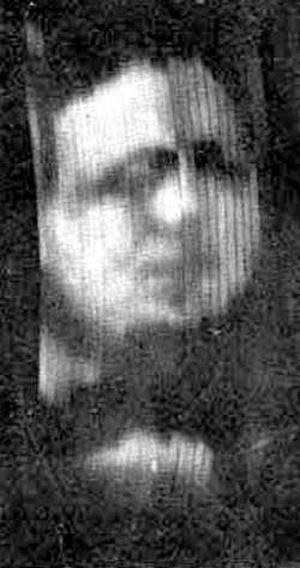
The receiver looked a lot like the transmitter: both had a wheel with holes cut out of it. The whirring noise you heard from the soundtrack came from the spinning wheel, called a Nipkow disk.
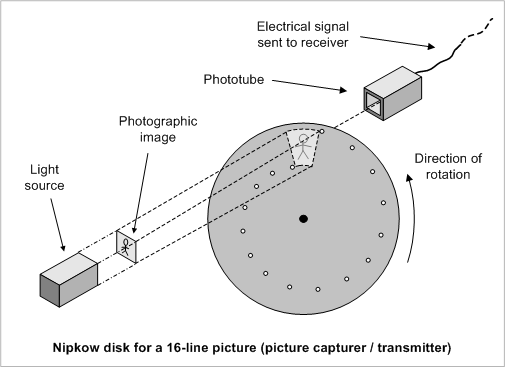
As the text in the image explains, each hole corresponds to a pixel. The first hole is at the edge of the disk, the next one is closer to the center by the diameter of the hole, and so on for all of them. All the holes make up a one-turn spiral. The number of them corresponds to the number of lines in the broadcast. If you have sixteen holes, as the above, you have sixteen lines. As indicated above, Stucky Bill's big debut was broadcast and received by machines with thirty-hole disks.
The holes, spinning rapidly, focused the light so that it could be converted to electricity by a single photocell, which meant a selenium photoelectric tube. Once converted, the electric signal was converted to radio waves by the transmitter and broadcast. The receiver did the reverse, which used a neon light to reproduce - sort-of - the transmitted signal. A neon bulb was used because it became brighter with a stronger signal, making it the light-bulb answer to a volume control.
Mechanical TV Set The Standard...For A While
Although the first was rickety, mechanical television proved to be more suited for improvements than all-electronic. In 1927, Herbert Ives and Frank Gray of Bell Labs had improved Baird's system so that it had 50 lines instead of thirty. More significantly, the Ives-Gray system could simultaneously broadcast sound!
So 1927 was not only the year of the first feature motion picture with sound it was also the year of the first TV broadcast with sound.
Once professional engineers got their hands on mechanical television, improvements were made quickly. By 1933, the BBC was broadcasting Baird thirty-line pictures that were pretty clear. Two years later, the leading-edge was 180 lines. Not bad for a system whose mechanical nature put a hard limit on the definitional clarity. By the close of the 1920s, GE engineer Ernst Alexanderson's improvements on the Baird system got a write-up in Radio News, with this diagram explaining it:
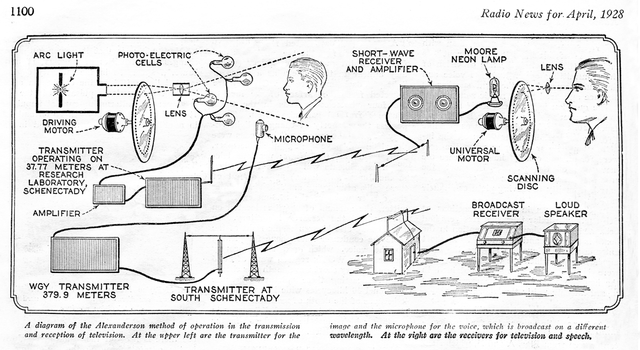
(Image from Wikipedia.)
But mechanical television was destined to have a short shelf life. As early as 1933, Philo Farnsworth had gotten up to 400 - horizontal! - lines and soon after he reached 600. So, all-electronic CRT TV made mechanical television obsolete and on its way out in the 1940s.
Fun Facts About Early TV
Fun Fact #1: The First Experimental Colour TV Was Unveiled In 1940. It was mechanical, too, and was a heckuvan achievement for its time. But it was built on a platform that was becoming obsolete, so it was both ahead of its time and behind its time.
Fun Fact #2: TVs Were Sold Commercially In The 1930s. Particularly in the U.K., where the BBC broadcast shows as early as 1931's Epsom Derby. An affluent Brit could buy a Baird set with confidence that there'd be something to watch.
No need to guess what the wheel thingie was :)
Fun Fact #3: The First BBC Broadcasts Were Not Live Yep: contrary to the development of CRT TV, the BBC broadcasts in the 1930s were pre-filmed. They did so to get around the limitations of the Baird transmitter.
Fun Fact #4: The Screens Of Both Mechanical And Early CRT Televisions Were Small! They were about the size of your smartphone screen. Even in the 1940s, the standard TV had a screen that was only the size of a medium-sized tablet. Even if the whole set was pretty big:
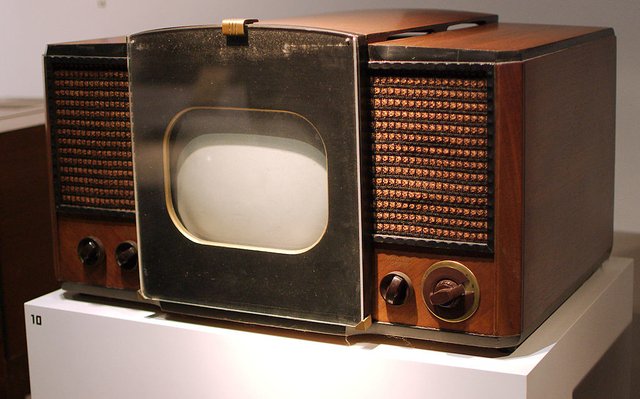
(Images from here, here and here.
Stooky Bill, You've Come A Long Way!
Wish you were still with us...
(Image from here.)
Thanks For Reading!
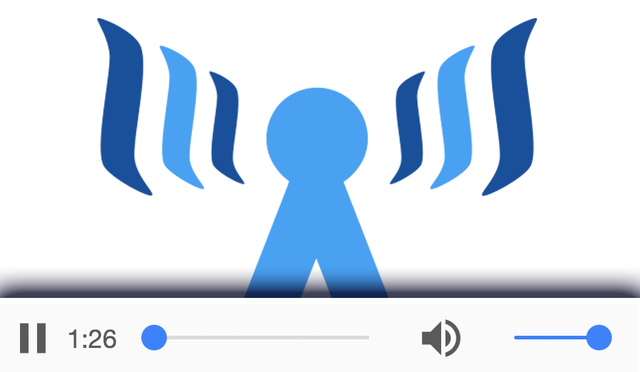
(Image from RadioSteem - we're yet to get Steem TV...)
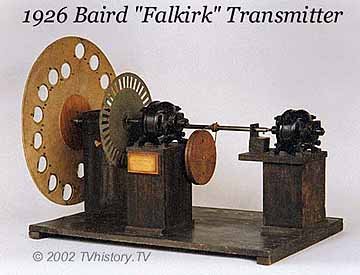
thanks a lot for explaining about the first television star Stooky Bill.
Very interesting article. You did a lot of research for this one, I bet.
Thanks! I did put Google through its paces, that's for sure. :)